
Monday, 24 February 201408:30 | Registration, Materials Pick-up, and Morning Coffee | |
Session Title: The Evolving Landscape of NGS. |
| | |
Session Chair: Melanie Lehman, PhD |
| | 09:00 | 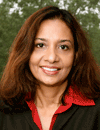 | Keynote Presentation Opportunities, Complexities and Challenges of NGS in Clinical Testing
Nazneen Aziz, Director, College of American Pathologists, United States of America
Many important advances in technologies for molecular analyses have fostered the rapid growth in molecular medicine. These technological advances include recombinant DNA techniques, genetic engineering, monoclonal antibody production, automated Sanger sequencing, polymerase chain reaction (PCR) including real time and digital PCR, microarrays and many more. The use of these technologies in routine testing of DNA, RNA, proteins for screening, diagnosing and prognosis of patient’s disease, and also in the development of new biologics and small molecule drugs have given rise to a science that 30 years ago was practically non-existent. Each of these technologies has led to significant advances, but one in particular, can be undoubtedly labeled as ‘disruptive’. Next generation sequencing (NGS), introduced in 2005, has revolutionized the field by increasing the speed at which the genome can be sequenced at a exponentially lower cost. Within 5 years of its introduction and widespread use in research, NGS is transforming molecular medicine.
Because it has a higher throughput and lower cost per base, NGS has been adopted into clinical testing far more rapidly than any other prior molecular technologies. The embracing of a new technology for routine diagnostics usually takes over 10 - 14 years or more. What is particularly intriguing about NGS’s rapid adoption into clinical testing is that compared to other molecular technologies it has a number of intricacies associated with its implementation that is unfamiliar to clinical laboratory. Dr. Aziz will address the opportunities, complexities and challenges of NGS clinical testing. |
| 09:45 | NGS for Integrated Diagnostic and Preventative Care
Swaroop Aradhya, Medical Geneticist, InVitae Corporation, United States of America
| 10:15 | Coffee Break and Networking with Exhibitors in the Exhibit Hall | 10:30 | RNAseq and Transcriptional Variation in Prostate Cancer
Melanie Lehman, Research Scientist, Queensland University of Technology, Australia
RNAseq is revolutionizing our understanding of RNA expression and is forcing a re-evaluation of our approach to systems biology. We have used de novo transcriptome assembly methods to identify alternative protein-coding RNAs that are missing canonical functional domains as well as regulatory long coding RNAs (lncRNAs) that are overlapping—and often mistaken for—protein-coding RNAs. I will discuss the implications of this transcriptional variation to pathway and functional analysis in the context of our research in late stage prostate cancer. | 11:00 | Capturing Tumor Cell Heterogeneity through Single Cell Next Gen Sequencing
Raimo Tanzi, Director, Silicon Biosystems SPA, Italy
Paper will Highlight Key Factors Involved when Using Single Cells in Next Generation Sequencing. | 11:30 | NGS in Clinical Diagnostics: On Technical Necessity, Clinical Utility, and Getting Paid for it !
Jorge Leon, President, Leomics Associates Inc, United States of America
| 12:15 | Lunch and Networking in the Exhibit Hall | |
Session Title: NGS in Research and in the Clinic. |
| | |
Session Chair: Doron Lipson, PhD |
| | 13:30 | 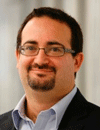 | Keynote Presentation Analytical Challenges in Clinical Cancer Diagnostics by NGS
Doron Lipson, Director, Foundation Medicine, United States of America
As the number of therapeutically-relevant cancer genes grows and biopsy size decreases, next-generation sequencing becomes increasingly attractive as a diagnostic tool for informing rationally targeted therapies. Developing an NGS-based test for use in clinical decision making poses significant analytical challenges, including the requirement to detect all classes of genomic alterations and to validate the accuracy of the assay across a wide range of possible alterations; limited amount and heterogeneity of tumor specimens; common unavailability of patient-matched normal control samples; and the need to provide molecular information in a format that can be readily interpreted by clinicians. I will discuss our approach in developing a comprehensive, pan-cancer diagnostic assay and experience analyzing over 9,000 clinical specimens in our CLIA-certified laboratory, which has demonstrated potentially actionable alterations in 80% of cases, and has led to numerous novel insights into cancer development. |
| 14:15 | Is the $1000 Genome Really Here: Market Analysis of the NGS Space
Shawn Baker, Chief Science Officer/Chief Executive Officer, AllSeq Inc, United States of America
Illumina recently announced the HiSeq X Ten, the platform they say will deliver the long-awaited $1000 genome. But what are the assumptions behind that price calculation and are they realistic? There is at least a 1000-fold range in the current price/Gb across the various next generation sequencing platforms, but comparing platforms on this metric alone can be very misleading. This presentation will examine the latest industry announcements around price and performance and place them in the context of the longer-term industry trends. It will finish up with a peek at some of the technologies on the horizon. | 14:45 | Coffee Break and Networking with Exhibitors in the Exhibit Hall | 15:00 | Characterization of Microbial Communities using Next-Gen Sequencing
Mark Adams, Scientific Director, J Craig Venter Institute, United States of America
| 15:30 | Genome Sequencing in the Clinic: Found the Variants - Now What?
Jennifer Friedman, Clinical Professor of Neurosciences and Pediatrics, Rady Children's Hospital in San Diego, United States of America
Advances in genome sequencing hold tremendous promise for providing answers and tailored therapies for undiagnosed patients. How to interpret, transmit and act upon volumes of complex data remains a challenge for sequencing providers, physicians and their patients. This presentation will use case based examples to demonstrate promises and pitfalls encounter along the way. | 16:00 | Genome and Epigenome Analysis of iPS Cells for Regenerative Medicine
Akira Watanabe, Assistant Professor, Kyoto University, Japan
Pluripotent stem cells are now suggested as an artificial source of tissues, and consequently it is necessary to be able to guarantee their safety in the human body after transplantation. However, both embryonic stem (ES) cells and induced pluripotent stem (iPS) cells are produced after long-term culture, and thus harbor clone-to-clone variations in their DNA sequences and copy numbers as well as epigenetic profiles. It is therefore important to validate the quality of ES and iPS cells by genomic analyses. We aim to establish the standard method for evaluating iPS cells as a clinical-grade cell source by genome and epigenome analysis. We built the pipeline for both single-nucleotide variations (SNVs) and DNA copy number variations (CNVs), and performed exome and whole genome resequencing and compared between the original somatic cells and established iPS cells. We found not only clone-to-clone variations in iPS cell clones but also the heterogeneity in original somatic cells, indicating that comparison between original cells and established cells is essential for evaluating plulipotent stem cells. One of the iPS clones shows no non-synonymous mutations in exonic region. We also performed single cell transcriptome and genome analysis of iPS cells for evaluating quality of iPS cell clones that harbor heterogeneity . We introduce the strategy of genome and epigenome analysis for evaluating iPS cells for regenerative medicine using iPS cells. | |
Industry Trajectory Panel Discussion. Hosted by Theral Timpson, Founder, Mendelspod. Title of Panel Discussion: The Clinical Sequencer |
| | 16:30 | Panel Discussion: The Clinical Sequencer
Theral Timpson, Host and Producer, Mendelspod, United States of America
The Clinical Sequencer: With the FDA clearance of Illumina's MySeqDx platform, NGS is on it's way to becoming an integral part of clinical practice. Still, sequencing tools designed for research will need to be upgraded for routine clinical use. What features will set apart the tool which achieves most success in the clinic? What are the regulatory challenges for such a tool? Join us in a discussion of 'the clinical sequencer.'
Panelists:
Hakan Sakul, PhD, Exec Dir and Head of Diagnostics, Worldwide R&D, Pfizer, Inc.
Shawn Baker, PhD, CSO & Co-Founder, AllSeq, Inc.
Nazneen Aziz, PhD, Director, College of American Pathologists
Daniel Grosu, MD MBA, Vice President, Clinical Development and Medical Affairs, Illumina, Inc.
| 17:15 | 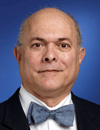 | Keynote Presentation The World of Next-Generation Clinical Sequencing
Paul Billings, Chief Medical Officer, Life Technologies, United States of America
|
| 18:00 | Evening Drinks Reception and Networking. All speakers, delegates, and exhibitors are invited to a networking dinner with cocktails on-site at the conference hotel venue. Excellent opportunity to network, make new alliances, and discuss a collaboration. California Wines and Premium Beers will be served together with hors d’oeuvres.
All speakers, delegates, and exhibitors are invited to a networking reception with cocktails on-site at the conference hotel venue. Excellent opportunity to network, make new alliances, and discuss a collaboration.
California Wines and Premium Beers will be served together with hors d’oeuvres.
| 19:30 | Close of Day 1 of the Conference. |
Tuesday, 25 February 201408:30 | Morning Coffee and Networking in the Exhibit Hall. | |
Session Title: NGS Sample Preparation and Migration of NGS into the Clinic. |
| | |
Session Chair: Melanie Lehman, PhD |
| | 09:00 | 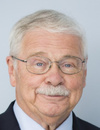 | Keynote Presentation Challenges for the Isolation and Preparation of DNA/RNA for Next Generation Sequencing
Michael Heller, Professor, Dept Bioengineering, University of California-San Diego, United States of America
|
| 09:45 | Next Generation Sequencing for Clinical Applications: Challenges to Developing Clinical Tests
Martin Siaw, Associate Scientific Director, Quest Diagnostics Nichols Institute, United States of America
| 10:15 | When Genomics Meets Human Health
Frank Ong, Associate Director, Illumina Inc, United States of America
The development of next-generation sequencing (NGS) technologies has made sequencing not only rapid and cost-effective, but also highly accurate and reproducible. These advances have increased the utility of NGS in clinical settings, with applications ranging from the identification of rare diseases to the detection of chromosomal abnormalities in maternal-fetal medicine. Deep sequencing and circulating free tumor DNA in the oncology space is also trending toward clinical utility. Regulatory clearance of NGS-based platforms and approval of clinical assays utilizing NGS technologies are also central to the wide-scale implementation of NGS in personalized medicine. | 10:45 | Reducing the Complexity of Clinical Omics Reporting for Clinicians and Laboratories
Jonathan Hirsch, Founder and President, Syapse, United States of America
Providing a clinical omics report that a physician can use in routine care has proven to be a challenge, driven by reliance on outdated tools such as fax machines. Syapse has built a cloud-based software platform that enables the use of omics at the point of care through an interactive web portal. We will describe how clinical omics labs use the Syapse platform to maintain an evolving omics knowledge base, which drives updated clinical reporting through interactive, intuitive interfaces designed for ease of use and comprehension. We will describe how hospitals use the Syapse platform to place omics results in the context of clinical guidelines, enabling physicians to easily adopt and integrate omics into their clinical workflow. | |
TRM-Leipzig Sponsored Session: NGS in Regenerative Medicine and Access to the European Market |
| | 11:15 | 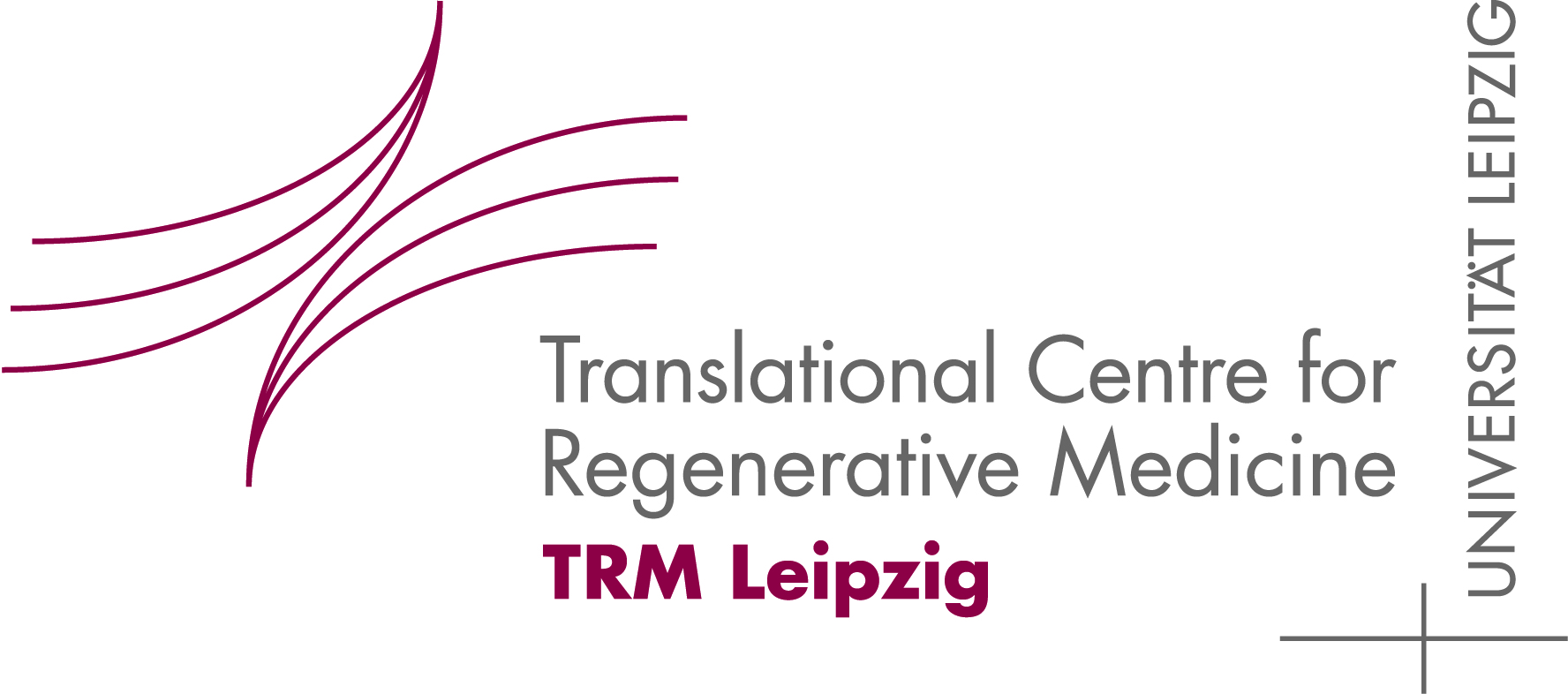 Technology Spotlight: Technology Spotlight:
Introduction to the TRM-Leipzig
Susanne Mueller, Project Head Education and Staff Development, TRM-Leipzig
The Translational Centre for Regenerative Medicine (TRM) of the Leipzig University based in Leipzig, Germany develops novel diagnostic and therapeutic methods of regenerative medicine and enables the rapid transfer of results into medical practice. In the framework of interdisciplinary research projects the TRM bridges the gap between basic research, clinical application and commercial exploitation. Its Service portfolio comprises Research and Development Services, Non-clinical Safety Testing, Preclinical Services and Continuing Education and Consulting.
| 11:30 | Tumorigenicity and Genome Stability in Potential Stem Cell-based Medicinal Products–Relevance of Cytogenetic Analysis in Respect to the Requirements of the European Pharmaceutical Market
Heidrun Holland, Investigator, TRM Leipzig, Germany
| 11:45 | Legal Requirements for the Access to the European Pharmaceutical Market and Legal Basis of GxP (GLP/GMP) for Cell Analysis within the European Pharmaceutical Market
Timo Faltus, Investigator, TRM Leipzig, Germany
| 12:00 | Characterization of microRNAs within the Regulation of Gene Expression in Regenerative Medicine Approaches
Nicole zur Nieden, Assistant Professor, University of California Riverside, United States of America
| 12:15 | Lunch and Networking in the Exhibit Hall. | 13:15 |  Technology Spotlight: Technology Spotlight:
Adventures in Next-Generation Sequencing: From Cancer Evolution to Point Mutation Detection
Clarence Lee, Associate Director, Life Technologies
| |
Session Title: NGS for Studying Circulating DNA, CTCs, and Extracellular Vesicles. |
| | |
Session Chair: Andrew Hill, PhD |
| | 13:45 | 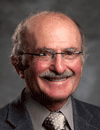 | Keynote Presentation Noninvasive Personalized Genomics
Charles Cantor, Chief Scientific Officer, Sequenom Inc, United States of America
Most of the DNA in blood is contained in nucleated white blood cells. But a small amount of circulating DNA arises from distant locations. Most of this is short free DNA fragments produced by apoptosis. If these fragments have DNA sequence or epigenetic differences from the free DNA that arises from white blood cell death or breakage, characterization of the differences allows information to be obtained about remote sites in the body where apoptosis has occurred. Noninvasive prenatal testing based on circulating free fetal DNA fragments is a mature commercial endeavor. DNA sequencing is used to detect aneuplodies but more focused assays can also be employed to look at specific loci. In 2013 more than half a million women were tested noninvasively by plasma DNA sequencing. It is reasonable to expect that a similar analysis of circulating cancer DNA will be extremely useful clinically but these applications are still in their infancy. In cancer the need to monitor a patient’s plasma DNA frequently strains the abilities and throughputs of current sequencing platforms. Future applications are likely to be developed wherever apoptosis produces clinically useful circulating DNA fragments. |
| 14:30 | Coffee Break and Networking with Exhibitors in the Exhibit Hall | 14:45 | Understanding the Transcriptome in a Whole Tissue – a Single Cell Perspective
Suraj Bhat, Professor, University Of California Los Angeles, United States of America
Biological variability between cells has been attributed to the intrinsic stochastic nature of the molecular interactions associated with various cellular processes. This variability has also been referred to as “noise”. The relationship, if any between the variability of gene expression, within individual cells in a tissue, to the functional phenotype of that tissue, remains to be understood. We have been working with the vertebrate ocular lens whose functional phenotype is transparency that allows transmission of light into the eye, which makes vision possible. The ocular lens is a highly organized tissue composed of an epithelium and a large number of differentiated fiber cells that accumulate a large amount of crystallins which generate transparency. We have now assessed the “noise” of the gene expression that contributes to the phenotype of the fiber cells and from this determination assessed the molecular heterogeneity in the ocular lens. We find that transcription patterns of crystallins (proteins physically associated with transparency) are different from non-crystallins. We will introduce this paradigm for the study of transcriptional basis of the cellular heterogeneity within a whole tissue and discuss data obtained employing microfluidic RT-qPCR analysis of gene expression in individual fiber cells of the normal mouse lens. | 15:30 | Deep sequencing of RNA from Exosomes: Applications for Biomarker Discovery
Andrew Hill, Professor and ARC Future Fellow, The University of Melbourne, Australia
Exosomes are small vesicles released by cells into the extracellular space. They can be isolated from many biological fluids, including blood fractions, cerebrospinal fluid, and urine. Exosomes contain proteins, lipids and genetic material in the form of RNA, often reflecting the state of the cell of origin in the makeup of these components. In diseases such as cancer, the expression profile of certain miRNA’s is altered in exosomes, providing their potential use as sources of biomarkers. We study neurodegenerative disorders such as Alzheimer’s, Parkinson’s, and prion diseases. These are all diseases of our ageing population, are associated with proteins that misfold and deposit in the brain and are difficult to easily diagnose in the living patient. Work from our lab and other have shown that the proteins responsible for these diseases are associated with exosomes, suggesting these vesicles may play a role in the disease process. We have used next generation deep sequencing to analyse the RNA content of exosomes from both cell culture models and human clinical samples. This presentation will discuss our findings relating to the use of deep sequencing for analysing the genetic content of exosomes, the sample preparation required for such work, and highlight how these technologies can be utilised in biomarker discovery using exosomes as a target. | 16:15 | Efficient Sequencing of microRNA and Clipped RNA Fragments
Yongjun Chu, Postdoctoral Fellow, University of Texas Southwestern Medical Center, United States of America
| |
Session Title: Emerging Themes in NGS. |
| | |
Session Chair: Suraj Bhat, PhD |
| | 16:45 | Antibody Discovery and Vaccine Design – The Next Generation
Jiang Zhu, Assistant Professor, The Scripps Research Institute, United States of America
By combining next-generation sequencing and bioinformatics, antibodyomics has emerged as a powerful technology for the quantitative analysis of antibody repertoire and response and is poised to revolutionize antibody discovery and vaccine design. This trend was evidenced by recent breakthroughs in the analysis of broadly neutralizing HIV-1 antibodies. Starting from millions of antibody sequences obtained from deep sequencing, one can identify the entire somatic population for a known broadly neutralizing antibody isolated from the same sample, delineate the B-cell ontogeny of broadly neutralizing antibody lineages, de novo identify broadly neutralizing antibodies from a donor sample with uncharacterized antibody status, and track antigen-specific temporal antibody response in natural infections and vaccine clinical trials. It is foreseeable that this technology will significantly accelerate antibody discovery and vaccine design for pathogens such as HIV-1, influenza, respiratory syncytial virus, hepatitis C virus and human cytomegalovirus. The application of antibodyomics to autoimmune diseases and tumors/cancers is also being explored. | 17:15 | Using RNA-seq Directly in the Clinic
Gitte Pedersen, Chief Executive Officer, Genomic Expression, United States of America
RNA is the biomarker of choice for a number of large commercial and reimbursed diagnostic products from e.g. Genomic Health and CardioDx. However using RNA-seq in the clinic remains challenging from a cost, time to answer and data handling perspective. Genomic Expression’s “bait free” target filtering sample prep method solves most of the problems. The technology is platform-agnostic and can be applied with any sequencing platform reducing cost/sample a factor of 10 and providing an answer in less than 1 week and an out-put file of less of 30 MB. Genomic Expression is leveraging its technology and access to samples in a single payer system that implemented electronic medical records a decade ago, to provide a superior platform for development of Next Generation Diagnostics together with selected partners. | 17:45 | Molecular Characterization of Circulating Tumor cells: Opportunities and Challenges
Denis Smirnov, Associate Scientific Director, Janssen Pharmaceuticals, United States of America
Molecular characterization of circulating tumor cells (CTCs) offers a unique opportunity to dynamically monitor metastatic process so optimal therapy regimens can be developed and applied in clinic. Potential and challenges of molecular characterization of CTCs will be discussed. | 18:15 | Close of Conference. |
|

 Add to Calendar ▼2014-02-24 00:00:002014-02-25 00:00:00Europe/LondonNext Generation Sequencing: Research to ClinicNext Generation Sequencing: Research to Clinic in San Diego, California, USASan Diego, California, USASELECTBIOenquiries@selectbiosciences.com
Add to Calendar ▼2014-02-24 00:00:002014-02-25 00:00:00Europe/LondonNext Generation Sequencing: Research to ClinicNext Generation Sequencing: Research to Clinic in San Diego, California, USASan Diego, California, USASELECTBIOenquiries@selectbiosciences.com